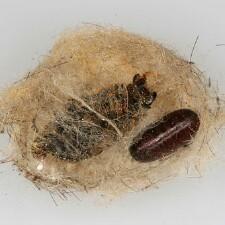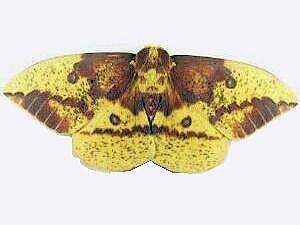|
Lepidoptera: Moths, Butterflies and Skippers |
|
|
|
|
 Monarch Butterfly
Monarch Butterfly
Danaus plexippus
|
 Variegated Fritillary, Euptoieta claudia
Variegated Fritillary, Euptoieta claudia
© Tom Murray
|
 Cabbage White Butterfly
Cabbage White Butterfly
Pieris rapae
|
 Western Tussock Moth
Western Tussock Moth
© Joyce Gross
|
The pupa stage of butterflies is usually referred to as the chrysalis. They often seem like little jewels tied by silk to a twig, sometimes attached to a building. Moth pupae are often enclosed within silken cocoons and generally dull by comparison. They may be attached to the bark of a tree, hidden within a folded leaf, within leaf litter, or within a chamber excavated in the soil. Many, such as bagworms, pupate within a case built originally to protect the larvae. Still others pupate within stalks of plants or burrows in trees. The larva of a Western Tussock Moth, shown above, made a cocoon in which to pupate, but it was killed by developing larva of a parasitoid fly whose pupa is seen beside the corpse of the moth pupa.
|
|
|
|
 Imperial Moth -- Eacles imperialis
Imperial Moth -- Eacles imperialis
|
 Red-bordered Emerial Moth -- Nemoria lixaria
Red-bordered Emerial Moth -- Nemoria lixaria
|
 Horrid Zale Moth -- Zale horrida
Horrid Zale Moth -- Zale horrida
|
|